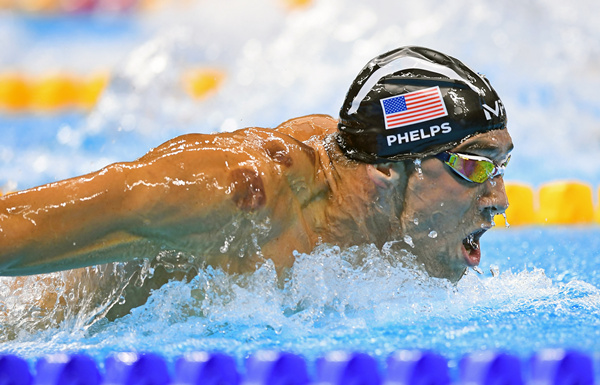 |
|
The swimmer Michael Phelps sported deep-purple circles on his shoulder in the 200-meter butterfly semi-final in Rio de Janeiro, August 8, 2016. [Photo/Xinhua] |
Cupping, a form of acupuncture, is done by lighting flammable liquid in a glass cup. Once the flame goes out, the drop in temperature creates suction which sticks the cups to the body. The suction pulls the skin away from the body and promotes blood flow to the area, which, in turn, reduces muscle tension and inflammation, and promotes healing. But the therapy can also cause small blood vessels to burst, leaving the circular bruises seen on Phelps and other athletes, which typically last for three or four days but can last for weeks.
Does cupping work?
US gymnast Alex Naddour told USA Today that cupping was "better than any money I've spent on anything else". "That's been the secret that I have had through this year that keeps me healthy," Naddour told the newspaper, adding that it had saved him from "a lot of pain".
Dana Vollmer, a two-time medalist at the Rio games, told the Sporting News that "it helps with blood flow, it helps pull fluid or swelling out of different areas when you are able to put this cup on and move it. It works great for a lot of us. A lot of us use it."
Dr Robert Glatter, an emergency physician at New York's Lenox Hill Hospital, who is in Rio for the Olympics, told CBS News, "There's no scientific evidence. There are multiple trials out there but no quality evidence."
That doesn't mean cupping is useless, he said. Cupping could work as a placebo because people think it works. "When people feel better, they may perform better," Glatter said. "But in terms of performance and power, (Phelps) already got that in the bag."
Bauer at the Mayo clinic said the attention that cupping is getting is good because it "makes people ask the right questions".
"The right question is not, 'Gee, I saw something cool on TV. I wonder if I can do that?' The better question is, 'I'm going to do some homework, cupping appears to be interesting, how does it fit into a traditional Chinese medicine practice? Is it given solo or is it part of a complicated and comprehensive care plan that involves nutrition, exercise, maybe acupuncture?' If you can get people to go back and put things in context, then we have a great discussion."
Amy He and Wang Linyan in New York contributed to this story.